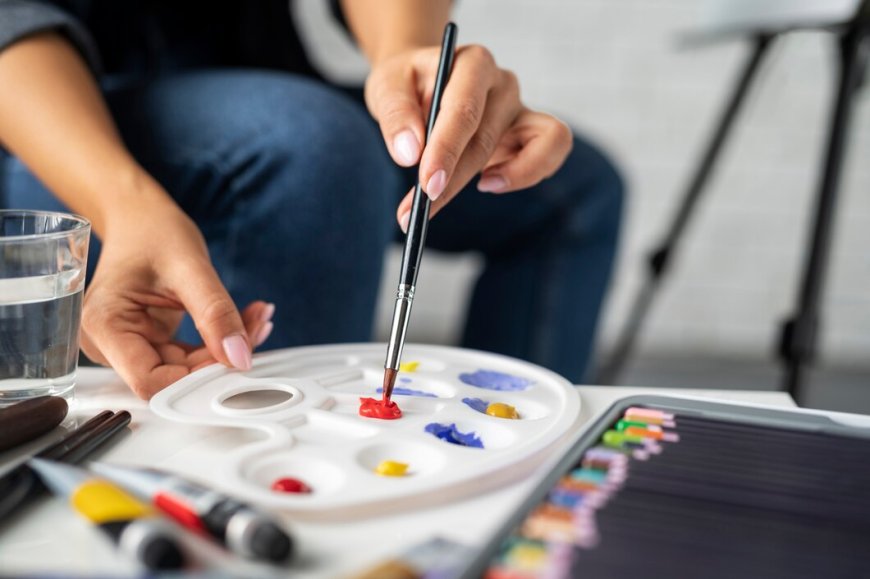Why Arts Education Matters
The Creative Spark
Arts education is not just about learning to paint or play an instrument; it's about nurturing the creative spark within each student. Creativity is a crucial skill in today's fast-paced, ever-changing world. It allows individuals to think outside the box, come up with innovative solutions, and adapt to new challenges.
Enhancing Critical Thinking
One of the most significant benefits of arts education is its ability to enhance critical thinking skills. When students engage in artistic activities, they learn to analyze, interpret, and make judgments. These skills are transferable to other academic subjects and real-world situations.
Boosting Academic Performance
Studies have shown that students who participate in arts education tend to perform better academically. According to a report by the National Endowment for the Arts, students involved in the arts are four times more likely to be recognized for academic achievement. This correlation suggests that arts education can positively impact overall academic performance.

The Science Behind Creativity
Brain Development
Engaging in artistic activities stimulates brain development. Neuroscientific research has shown that creating art can increase the connectivity between different brain regions, enhancing cognitive functions such as memory, attention, and spatial reasoning.
Emotional Intelligence
Arts education also plays a crucial role in developing emotional intelligence. Through artistic expression, students learn to understand and manage their emotions, empathize with others, and develop social skills. These abilities are essential for personal and professional success.
Real-World Applications
Innovation in Business
Creativity and innovation are highly valued in the business world. Companies like Google and Apple prioritize hiring individuals with strong creative skills. Arts education can provide the foundation for developing these skills, making students more competitive in the job market.
Problem-Solving Skills
Arts education teaches students to approach problems from multiple perspectives. This skill is invaluable in any field, from engineering to medicine. By learning to think creatively, students can develop innovative solutions to complex problems.
Case Studies
Finland's Success Story
Finland is renowned for its high-quality education system, which includes a strong emphasis on arts education. Finnish students consistently rank among the top in international assessments of academic performance. This success can be partly attributed to the integration of arts into the curriculum.
STEAM Education
The STEAM (Science, Technology, Engineering, Arts, and Mathematics) approach is gaining popularity worldwide. By incorporating the arts into STEM education, schools can provide a more holistic learning experience. This approach has been shown to improve student engagement and academic outcomes.
Benefits of Arts Education
|
Benefit
|
Description
|
|---|---|
|
Enhanced Creativity
|
Encourages innovative thinking and problem-solving skills.
|
|
Improved Academic Performance
|
Students involved in the arts tend to achieve higher academic success.
|
|
Emotional Intelligence
|
Helps students understand and manage their emotions.
|
|
Critical Thinking
|
Develops the ability to analyze, interpret, and make judgments.
|
|
Brain Development
|
Stimulates cognitive functions such as memory and attention.
|
The Future of Arts Education
Integrating Technology
The future of arts education lies in integrating technology into the curriculum. Digital tools and platforms can provide new opportunities for artistic expression and collaboration. Virtual reality, for example, can offer immersive experiences that enhance creativity and learning.
Policy Support
For arts education to thrive, it requires strong policy support. Governments and educational institutions must recognize the value of the arts and allocate resources accordingly. This includes funding for arts programs, professional development for teachers, and access to quality materials and facilities.
The Art of Possibility
Arts education is not a luxury; it's a necessity. It equips students with the skills they need to succeed in a rapidly changing world. By fostering creativity, enhancing critical thinking, and improving academic performance, arts education opens up a world of possibilities for students. Investing in arts education is an investment in the future.

FAQs
Q: How does arts education enhance critical thinking skills?
A: Arts education enhances critical thinking skills by encouraging students to analyze, interpret, and make judgments about artistic works. These skills are transferable to other academic subjects and real-world situations.
Q: What is the STEAM approach in education?
A: The STEAM approach integrates Science, Technology, Engineering, Arts, and Mathematics into the curriculum to provide a more holistic learning experience. This approach has been shown to improve student engagement and academic outcomes.
Q: How does arts education impact brain development?
A: Engaging in artistic activities stimulates brain development by increasing connectivity between different brain regions. This enhances cognitive functions such as memory, attention, and spatial reasoning.
Q: Why is emotional intelligence important in arts education?
A: Emotional intelligence is important in arts education because it helps students understand and manage their emotions, empathize with others, and develop social skills. These abilities are essential for personal and professional success.
Q: How can technology be integrated into arts education?
A: Technology can be integrated into arts education through digital tools and platforms that provide new opportunities for artistic expression and collaboration. Examples include virtual reality, digital art software, and online collaborative projects.
